Unit 5, Part 1: Phylums: Porifera, Cnidaria, Ctenophora
^^Phylum Porifera:^^
- They are primarily marine animals
- Made of loosely organized cells
- There are about 9,000 species
Main Characteristics:
- They are asymmetrical
- ^^Spongocoel^^: central cavity (branching chamber) through which water circulates
- They have no tissues or organs
- They have an ^^Osculum: openings where water leaves out from^^
Cell types of Porifera:
^^Pinacocytes^^: cells that line the outer surface
^^Porocytes^^: openings where water entered and these cells regulate water circulation
^^Mesohyl^^: jellylike layer of cells that lies under pinacocytes
^^Mesenchyme^^ ^^cells^^: amoeboid cells that function for reproduction, transporting and storing food (they do not filter out food)
^^Choanocytes^^: (collar cells) that line the inner chamber and has flagellum that creates water currents and filters out food particles
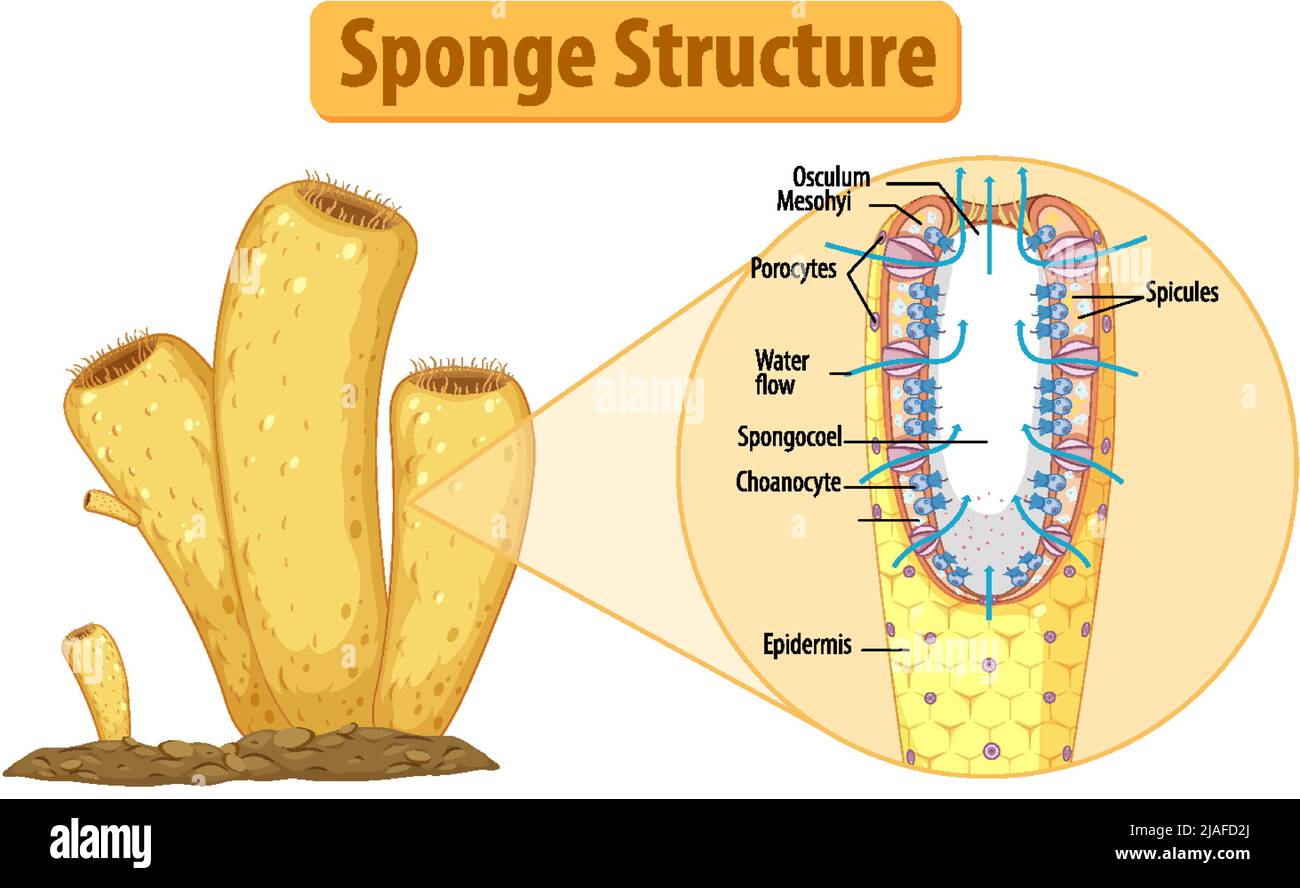
Sponge Skeleton Makeup:
- ^^Spicules^^: needle like spikes
- ^^Spongin^^: fibrous material made of collagen
Body Forms:
Three Types of Body Forms
- ^^Ascon^^: vase like body form
- ^^Sycon^^: body form where walls appear folded
- ^^Leucon^^: body form with extensively branched canal system

Water Currents:
- Water enters through the porocytes
- The water then enters into the spongocoel where the choanocytes that line the walls whip their fagellum around to seperate the water from the food
- The water exits out through the osculum
Maintenance Functions:
^^Sponges are filter feeders through choanocytes^^
Mesenchyme cells distribute food to the other cells of the sponge
Waste is eliminated through simple diffusion
Sponges have no nerve cells
Reproduction:
- ^^Monoecious:^^ both sexes occur in the same individual
- These sponges ^^DO NOT self-fertilize^^
- Sperm exits through the osculum and then enters another sponge through incurrent water
- The fertilization then results in flagellated larvae
- Asexual Reproduction: ^^Gemmules^^
- ^^Gemmules are resistant capsules containing mesenchyme cells (amoebic cells)^^
- These gemmules occur when conditions are unfavorable
- These gemmules can then reorganize into a sponge
Classes of Porifera:
^^Class Calcarea^^:
- Spicules of calcium carbonate
- These sponges are responsible for the limestone in the ocean
- Capable of all body forms
- All marine
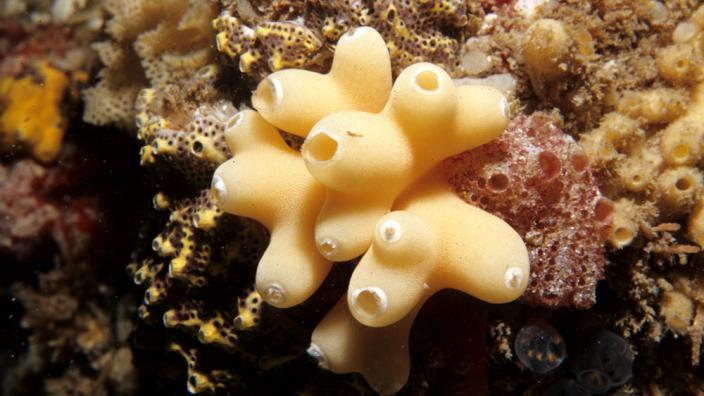
==Class Hexactinella:== “glass sponges”
- Spicules of silica (glass)
- Can have sycon or leucon body form
- All marine
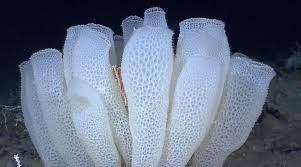
@@Class Demospongiae:@@
- Brightly colored
- Spicules or sponging (or both)
- Only leucon body forms
- Freshwater or marine
- These are bath sponges
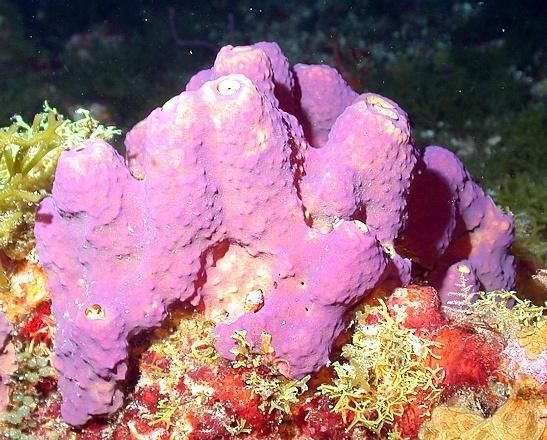
%%Class Homoscleromorpha%%
- Simplest ones
- Small or absent spicules
- All marine
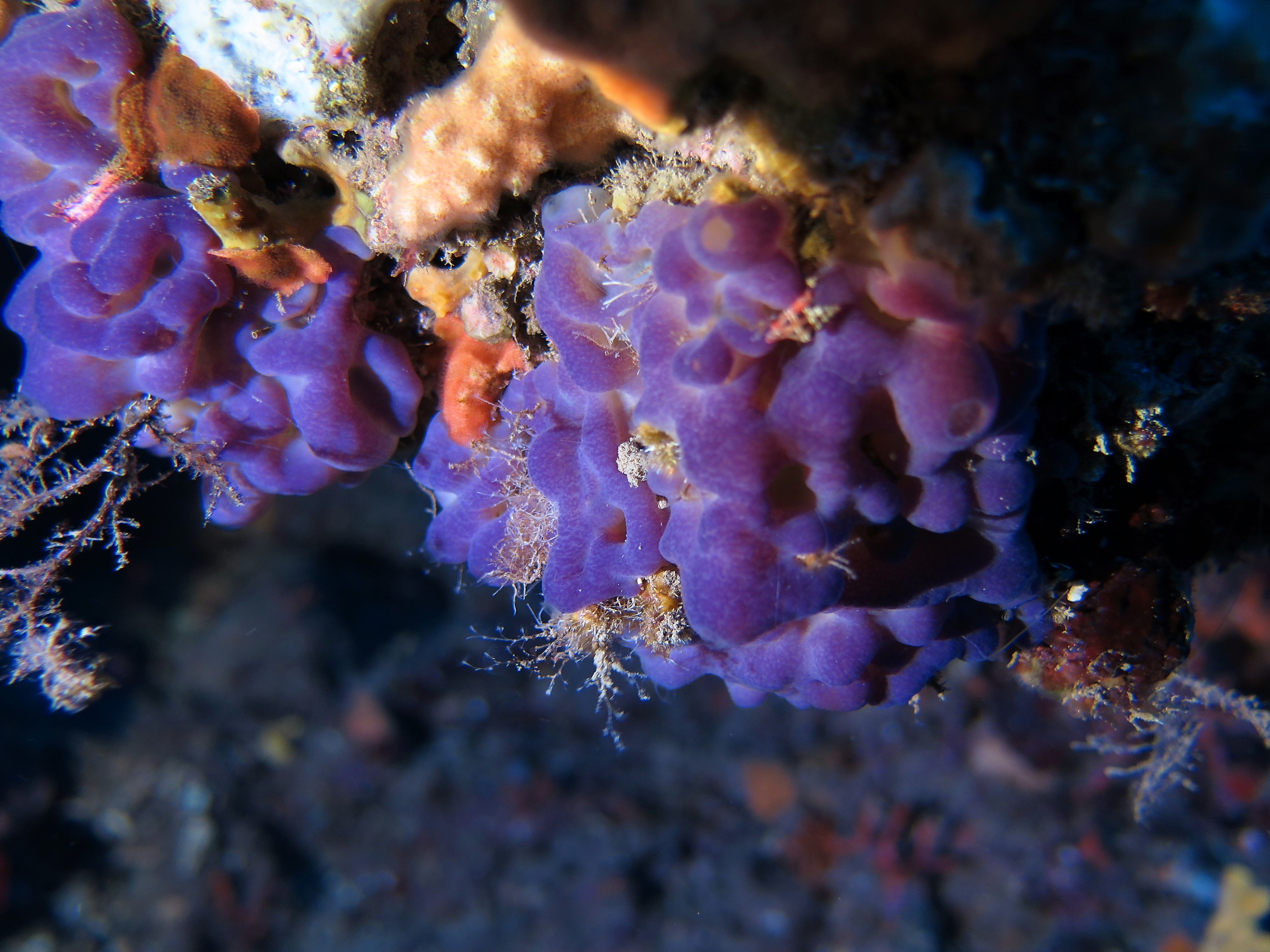
==Phylum Cnidaria:==
Main Characteristics:
- ==Mostly marine==
- Over 9,000 species
- ==Radial== symmetry
- ==Diploblastic==; has only two germ layers
Body Wall:
- ==Epidermis==: outer layer of the body wall
- ==Gastrodermis==: inner layer of the body wall
- ==Mesoglea==: the jelly-like material between the epidermis and gastrodermis'
Cnidocytes:
- ==These are stinging cells== that are made of either gastrodermal or epidermal cells
- ==Cnidocytes produce cnida==
- ==Cnida==: fluid filled capsule containing coiled hollow tube
- ==Nematocysts==: type of cnida used in food gathering and defense (they deliver paralyzing toxin)
Reproduction: (Dioecious)
==Alternation of generations==: the life cycle of cnidarians includes both body forms
- ==Polyp stage:==
- Usually asexual and sessile during this stage
- Mouth is surrounded by tentacles and the aboral end is attached to substrate
- ==Medusa stage:==
- Free swimming
- Shaped like an inverted bowl
- Mouth centrally located and facing down
Maintenance Functions:
- ==Gastrovascular Cavity==; digestions, exchange of gases and waste, discharge of gametes
- Most eat small crustaceans or fish
- Enzymes help digest in food vacuoles
“Skeleton”:
- ==Hydrostatic Skeleton==: water filled gastrovascular cavity contracts and causes movements as it propels itself
- Polyps:
- move through somersaulting and gliding along the substrate
- Medusae:
- move through swimming and floating
Nerve Cells:
- ==Most primitive nerve cells in animal kingdom==
- ==Have no brain==
- ==Located below epidermis and form a nerve net==
- Conducts impulses around body in response to stimulus
Waste:
- Large surface area to volume ratio
- Waste is eliminated through diffusion
- ==They only have one opening so waster is disposed through the mouth==
Reproduction:
Cnidarians (jellyfish) are dioecious
- Meaning that each individual has one sex (male or female)
==Life Cycle:==
- After fertilization of and egg than a blastula is formed
- This blastula matures into free swimming planula larva
- The planula larvaa then settles on a substrate as a polyp
- Medusa body stage forms from budding polyp
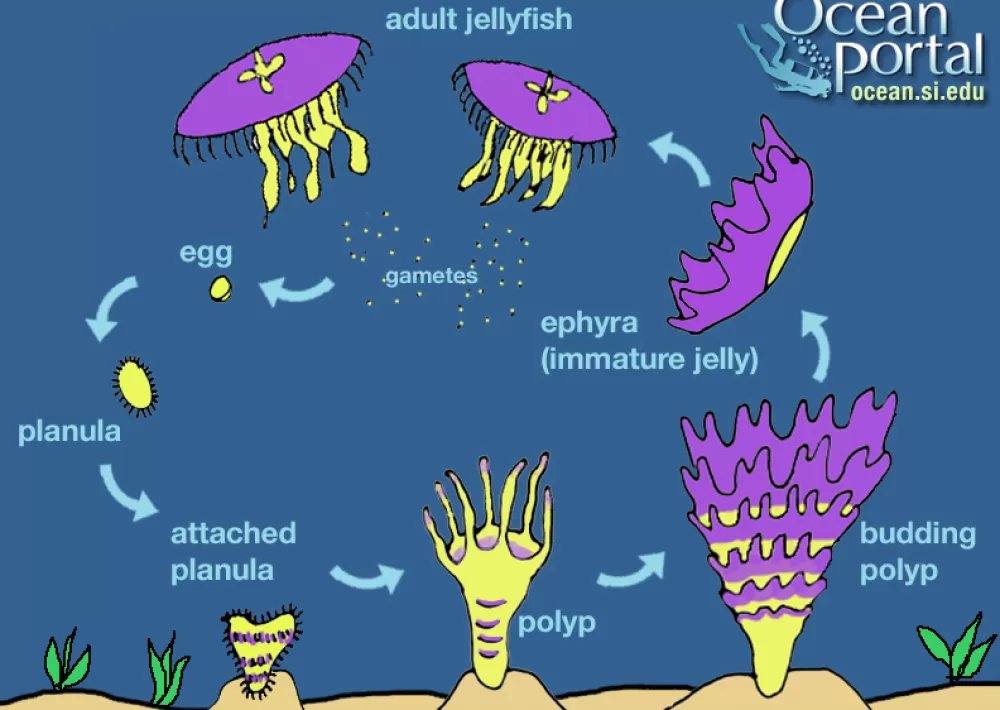
Classes of Cnidarians:
==Class Hydrozoa:==
- Small, mostly marine
- But, they do have some freshwater species
- Some do not have a medusa stage
- Can exist as colonial polyps through budding (diagram)
- ==Gastrozooid==: feeding polyp
- ==Gonoozoid==: reproductive polyp
==Class Staurozoa:==
- All marine
- Lack a medusa stage
- Crawling planula larvae
==Class Scyphozoa:==
- All marine
- True “jellyfish”
- Dominant medusa stage
==Class Cubozoa:==
- Cube shaped medusa
- Polyps are small
- Active swimmers
- Some are very dangerous
==Class Anthozoa (Anemones):==
- Lack medusa
- Solitary or colonial
- Anemones, soft or stony corals
- All marine
%%Phylum Ctenophora:%%
%%Comb jellies%%
Same basic characteristics as cnidarians
Bioluminescent
- %%Comb Rows:%%
- %%Rows of thousands of cillia that are used for motion%%
- %%Colloblasts:%%
- %%Cells used to capture prey%%
